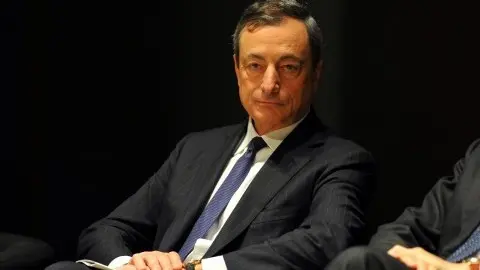EUR & ECB: No help provided and none to be expected
The cautious and dovish ECB bias today underlines the lack of domestic reasons for a meaningful EUR upside. We expect EUR/USD to rise persistently but only in response to structural USD weakness and for this to happen, we still need to wait a few more months
As expected, President Draghi's dovish comments during the ECB press conference today were largely in response to the recent slowdown in the Eurozone data. While not committing to a new set of liquidity operations (such as TLTROs), we expect a more direct hint at these measures in the upcoming March meeting (when the “relevant committees” might be tasked).
In our view, the lack of commitment to TLTROs was the main reason why EUR/USD rebounded from the strong horizontal support level of 1.1310 (though it is still lower on the day).
Lack of domestic drivers for a stronger euro
With the rising likelihood of new TLTROs being delivered by the end of 2Q19 and the falling probability of an ECB deposit rate hike in 4Q19 (given slower than expected growth and CPI remaining below target), this suggests the euro is unlikely to strengthen for good domestic reasons. This is in stark contrast to 2017 when expectations of policy normalisation by ECB led to a meaningful EUR rally. This is currently not the case as the second step of the ECB policy normalisation (meaningful rate hikes) is simply not on the table as growth and inflation dynamics have been fading.
EUR/USD to rise only once the dollar embarks on a structural downward trend
As we've written before in our 2019 FX Outlook: Peak Dollar, we see EUR/USD embarking on a more pronounced and persistent upwards trend only when the dollar peaks. Given our view, the Fed is not done yet with the tightening cycle (our economists look for two more Fed funds rate hikes this year, after the initial pause in coming months) this suggests a modest downside to EUR/USD in the coming months. We target EUR/USD 1.12 in three-months before a recovery to EUR/USD 1.20 by year-end as, by then, we expect the dollar to peak and embark on a structural downtrend.
Implications for EM FX: The drivers behind EUR/USD matter
Our take on the drivers behind the expected EUR/USD upside later this year (weak USD, rather than strong EUR) also means that even with higher EUR/USD in 2H19, central and eastern Europe FX is unlikely to be a meaningful outperformer in the wider emerging markets FX space as was the case in 2017 (remember when the Czech koruna and Polish zloty were the two best performing EM currencies).
This is because if higher EUR/USD is caused by a weaker USD (and not a strong EUR), this also benefits other EM FX regions and not exclusively CEE FX (which back in 2017 was the chief beneficiary of the ECB induced EUR rally vs its EM peers). The CEE FX segment should do well in USD terms later this year, but unlikely to be a significant outperformer in the more extensive EM FX space.
Download
Download article
25 January 2019
In case you missed it: The new reality This bundle contains {bundle_entries}{/bundle_entries} articles"THINK Outside" is a collection of specially commissioned content from third-party sources, such as economic think-tanks and academic institutions, that ING deems reliable and from non-research departments within ING. ING Bank N.V. ("ING") uses these sources to expand the range of opinions you can find on the THINK website. Some of these sources are not the property of or managed by ING, and therefore ING cannot always guarantee the correctness, completeness, actuality and quality of such sources, nor the availability at any given time of the data and information provided, and ING cannot accept any liability in this respect, insofar as this is permissible pursuant to the applicable laws and regulations.
This publication does not necessarily reflect the ING house view. This publication has been prepared solely for information purposes without regard to any particular user's investment objectives, financial situation, or means. The information in the publication is not an investment recommendation and it is not investment, legal or tax advice or an offer or solicitation to purchase or sell any financial instrument. Reasonable care has been taken to ensure that this publication is not untrue or misleading when published, but ING does not represent that it is accurate or complete. ING does not accept any liability for any direct, indirect or consequential loss arising from any use of this publication. Unless otherwise stated, any views, forecasts, or estimates are solely those of the author(s), as of the date of the publication and are subject to change without notice.
The distribution of this publication may be restricted by law or regulation in different jurisdictions and persons into whose possession this publication comes should inform themselves about, and observe, such restrictions.
Copyright and database rights protection exists in this report and it may not be reproduced, distributed or published by any person for any purpose without the prior express consent of ING. All rights are reserved.
ING Bank N.V. is authorised by the Dutch Central Bank and supervised by the European Central Bank (ECB), the Dutch Central Bank (DNB) and the Dutch Authority for the Financial Markets (AFM). ING Bank N.V. is incorporated in the Netherlands (Trade Register no. 33031431 Amsterdam).